Plant Index
Uniola paniculata
Uniola paniculata L.
sea oats

Image ID: 19741
Image by: Dakar, Jacob
Image Collection: NCBG Digital Library
PLANT INDEX
ID_PLANT: UNPASCIENTIFIC NAME: Uniola paniculata
Include in WOTAS: 0
Publish to Web: 1
Last Modified: 2017-02-23
GENUS INDEX
GENUS CODE: UNIOLGENUS SCIENTIFIC: Uniola
GENUS AUTHORITY: L.
GENUS COMMON: Seaoats
GENUS SUMMARY: A genus of 2 species. The only other species of the genus ranges from Baja California south along the Pacific Ocean to Ecuador; other species previously treated in Uniola have been shown to be only distantly related and are now treated as Chasmanthium.
GENUS IDENTIFICATION:
GENUS REFERENCES: Yates in FNA (2003a); Yates (1966a, 1966b)=Z. [also see Chasmanthium]
FAMILY INDEX
FAMILY CODE: POACEAFAMILY SCIENTIFIC: Poaceae
FAMILY AUTHORITY: (R. Brown) Barnhart 1895 or GRAMINEAE A.L. de Jussieu 1789
FAMILY COMMON: Grass Family
FAMILY SUMMARY: A family of about 771 genera and 12,074 species, herbs (and some shrubs and trees), cosmopolitan. Tribal classification largely follows FNA (2003a, 2007a), with some changes based on subsequent research, as for instance in the Chloridoideae (Peterson, Romaschenko, & Johnson 2010a).
FAMILY REFERENCE: Flora of North America Editorial Committee (2003a, 2007a)=FNA; Hitchcock and Chase (1950)=HC; Blomquist (1948); Peterson, Romaschenko, & Johnson (2010a, 2010b). Key to genera adapted in large part from FNA.
NCBG DESCRIPTIVES
INTRO:STEMS:
LEAVES:
INFLORESCENCE:
FLOWERS:
FRUITS:
COMMENTS:
HEIGHT:
DURATION: Perennial
HABIT: Grass/Grasslike
LEAF ARRANGEMENT: Alternate
LEAF COMPLEXITY: Simple
LEAF RETENTION:
FLORAL CHARACTERISTICS
SYMMETRY:
BLOOM TIME: Jun-Nov
| Jan | Feb | Mar | Apr | May | Jun | Jul | Aug | Sep | Oct | Nov | Dec |
| x | x | x | x | x | x | x | x |
BLOOM COLOR:
| White | Red | Pink | Orange | Yellow | Green | Blue | Lavender | Purple | Violet | Brown | Not Applicable |
FRUITING PERIOD:
DISTRIBUTION
HABITAT TYPE:
NATIVE RANGE:
HORTICULTURAL
Plant Sale Text:
Bloom Table Text:
NCBG Location:
Cultural Notes:
SOIL MOISTURE: Dry, Average
LIGHT EXPOSURE: Sun, Part Shade
MINIMUM HARDINESS ZONE:
MAXIMUM HARDINESS ZONE:
GERMINATION CODE:
WILDLIFE VALUE:
DEER RESISTANCE:
GRIM COLLECTIONS
| Coll_id | Project | Collection date | Collector | Action |
| 540 | SOS | 2015-10-13 | Driskill | View |
| 635 | SOS | 2015-11-04 | Heraty | View |
| 746 | SOS | 2016-09-22 | Faucette | View |
| 763 | SOS | 2016-09-28 | Flood | View |
| 766 | SOS | 2016-09-29 | Walker | View |
| 895 | SOS | 2016-11-17 | Faucette | View |
| 942 | SOS | 2017-10-09 | Faucette | View |
| 949 | SOS | 2017-10-11 | Dakar | View |
USDA PLANTS DATABASE
USDA Symbol: UNPAUSDA Common Name: Seaoats
Native Status: L48 (N)
Distribution: USA (AL, DE, FL, GA, LA, MD, MS, NC, SC, TX, VA)
Duration: Perennial
Growth Habit: Graminoid
NATIONAL WETLAND INDICATOR STATUS
| Region: | AGCP | AK | AW | CB | EMP | GP | HI | MW | NCNE | WMVE |
| Status: | FACU | FACU | FACU |
WEAKLEY FLORA
SCIENTIFIC NAME: Uniola paniculataCOMMON NAME: Sea Oats
SYNONYMY: [= C, F, FNA, G, HC, K, RAB, S, Va, WH3, Z]
PHENOLOGY: Jun-Nov.
HABITAT: Abundant on unforested primary and secondary dunes on barrier islands, and on dry to mesic sand flats and interdune swales.
COMMENTS: Se. VA south to FL and west to TX and Mexico; West Indies. This is the most important sand-binding grass on ocean dunes from NC south, playing a critical role in primary succession on dunes.
RANGE MAP: Uniola paniculata.png

Key to Map Symbols
ABOUT FAMILY (Weakley Flora)
Poaceae (R. Brown) Barnhart 1895 or GRAMINEAE A.L. de Jussieu 1789 (Grass Family)
SUMMARY: A family of about 771 genera and 12,074 species, herbs (and some shrubs and trees), cosmopolitan. Tribal classification largely follows FNA (2003a, 2007a), with some changes based on subsequent research, as for instance in the Chloridoideae (Peterson, Romaschenko, & Johnson 2010a).
REFERENCE: Flora of North America Editorial Committee (2003a, 2007a)=FNA; Hitchcock and Chase (1950)=HC; Blomquist (1948); Peterson, Romaschenko, & Johnson (2010a, 2010b). Key to genera adapted in large part from FNA.
ABOUT GENUS (Weakley Flora)
Uniola L. (Seaoats)
SUMMARY: A genus of 2 species. The only other species of the genus ranges from Baja California south along the Pacific Ocean to Ecuador; other species previously treated in Uniola have been shown to be only distantly related and are now treated as Chasmanthium.
REFERENCE: Yates in FNA (2003a); Yates (1966a, 1966b)=Z. [also see Chasmanthium]
HERBARIUM RESOURCES
SERNEC: Find Uniola paniculata in Southeast Regional Network of Experts and Collections (if available)UNC SERNEC: Find Uniola paniculata in University of North Carolina Chapel Hill Herbarium - Southeast Regional Network of Experts and Collections (if available)
WEB RESOURCES
USDA: Find Uniola paniculata in USDA PlantsNPIN: Find Uniola paniculata in NPIN Database
FNA: Find Uniola paniculata in the Flora of North America (if available)
Google: Search Google for Uniola paniculata
IMAGE USE RECORDS
ID IMAGE: 19741 - Primary Image FloraQuest Plant Detail Page (Landscape Preferred)ID IMAGE1: 19741 - Primary Image WOTAS
ID IMAGE2: 0 - Secondary Image WOTAS
ID IMAGE3: 0 - Primary Image Plant Sale Sign (Landscape Only)
ID IMAGE4: 0 - Primary Image New Plant Sale Label (Portrait Only)
From the Image Gallery
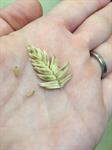 Image ID: 34932 |
 Image ID: 98483 |
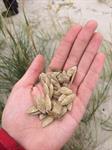 Image ID: 35481 |
 Image ID: 35480 |
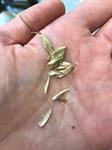 Image ID: 35460 |
 Image ID: 35459 |
 Image ID: 35313 |
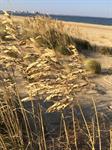 Image ID: 35312 |
 Image ID: 34931 |
 Image ID: 34922 |
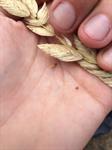 Image ID: 34872 |
 Image ID: 34252 |
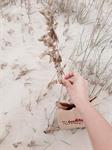 Image ID: 34253 |
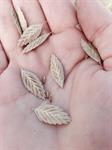 Image ID: 34254 |
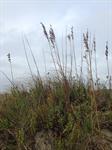 Image ID: 34537 |
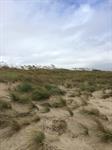 Image ID: 34870 |
 Image ID: 34871 |
 Image ID: 35311 |
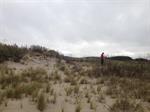 Image ID: 34539 |
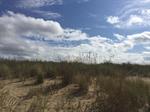 Image ID: 35458 |
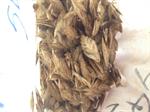 Image ID: 34538 |
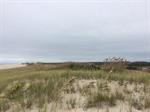 Image ID: 35479 |
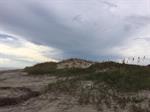 Image ID: 34930 |
 Image ID: 34923 |
 Image ID: 39660 |
 Image ID: 39661 |
 Image ID: 98481 |
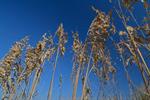 Image ID: 98482 |
 Image ID: 34921 |
 Image ID: 12159 |
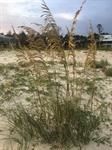 Image ID: 73750 |